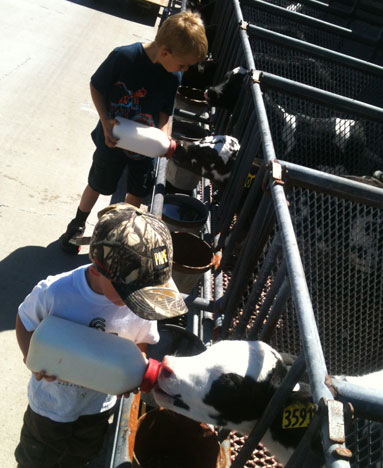Often, when we speak of generations, we are referring to the generations past.
Where our parents and grandparents were born and raised, where our ancestors immigrated from, what life was or may have been like for the generations that came before us and how it has become what it is for us today.

Preserving the traditions and memories of generations past is very much a part of our daily life.
Every bit as vital as the generations that have come before us are the ones just beginning and the ones that have yet to be: our children, our children’s children and so on down the line.
We make decisions on behalf of the well-being of our children each and every day: Are they dressed warm or cool enough? Have they eaten enough? Are they learning to make good food choices? Are they keeping out of harm’s way? Manners, doctors, schools, the list goes on and on.
There are hours, possibly even days’ and weeks’ worth of hours, of lost sleep: waking up with them during the night for feedings and nightmares, comforting them when they are sick, lying awake wondering if they are OK when we are away from them and wondering if we’ve done everything in our power to give them the tools they will need to be able to one day stand on their own.
The time and energy poured into our little ones cannot be measured. It cannot be replaced. The same goes for the next generation on our farm, our calves.
From the moment they are born, they are under the protection of many watchful eyes, and the hopes and dreams of what this new baby might accomplish are already being shared.
Making estimates based on the prior generations of her family, a new baby girl will come with high hopes for milk production and the excitement of extending her own family line.
Having a new baby on the farm is always exciting. Our little guys love checking in on the maternity pen. They will walk past each of the expectant mamas, hoping to catch a glimpse of a little miracle making its way into the world.
When they find new babies in the pen, each one needs a hug and a pat on the head – an official initiation and “Welcome to the farm” if you will – while I do my part, making sure they do not get too excited and make the new mama nervous.
As the newborn begins taking her first steps on those sweet, wobbly legs, there is a bottle of colostrum waiting for her, and she will soon be moved to the nursery area so that her mama can be tended to.
Once in the nursery area, she will be placed in her very own pen, with a rubber floor mat, open ventilation and her own feed and water buckets. One of the first questions visitors to the farm have when they come to the nursery area typically has to do with the individual pens for the little calves.
What may seem harsh is actually quite the opposite. When our children were born, they were not placed in the hospital crib with five other babies; they were placed in their very own space to be watched over and tended to on an individual basis.
The same is true for the babies on our farm. Keeping them separate assures they will get the one-on-one attention they need to grow up healthy and strong. Placing them in a group setting at such a young age would make it difficult to monitor feed and fluid intake, overall health and strength.
Our oldest is nearing the end of his kindergarten career, and he loves sharing the nursery area and explaining what goes on there. Both of the boys will scramble to hold a bottle at feeding time, to help mix powdered supplement into the pasteurized milk and to help Papa feed the grain.
They watch as Daddy goes down the row, looking at each calf and assessing them for the day. Are they warm or cool enough? Have they eaten enough? Are they up and moving around? Are they healthy? Does anyone need a bit of extra care? … Many of the same questions we ask ourselves about our own children.
More than 20 years ago, my father-in-law and his brother designed our current calf area. Each pen has a rear access gate, rubber mats for safety and comfort which also allow the mess to fall to the floor beneath and be cleaned by the flush system.
A locking stanchion for administering medications, a flip-style roof that allows sunshine on warm days and cover from wet weather, and an easy-tip system for emptying multiple water buckets with a single flip of the lever.
At the end of each feeding, the nursery area is washed down with a pressure hose, and when a calf is weaned from milk and moved to the group pens, that pen is pressure washed and left open until it comes time to welcome a new resident. The design of the pens makes it possible for us to put the health and care of our calves as the number one priority.
Making sure the farm babies are cared for ensures strength in the next generation of our farm. Giving them a strong foundation helps them to be able to achieve all they are capable of. Sometimes the most influential generations are the ones we have yet to encounter.
We are excited to see how our young calves will grow and how our herd will change and develop with them, just as we are excited to see how our children will grow, forever changing our family one step at a time. PD

Ellen Durrer
Dairy Producer
Modesto, California




